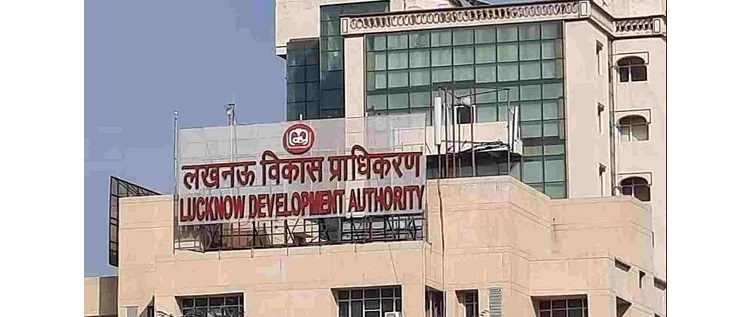E - PAPER
LIGHTING FOR SMART BUILDINGS - ALIGNING WELLNESS & SUSTAINABILITY
Praveen Thampi, Creative Director, The Ministry of Light was the eminent speaker of the day at the Havells “Spotlight” Series organised by Realty+ Masterclass highlighting the integration of lighting technology & design to build smart and healthy buildings. Praveen Thampi
 BY
Realty Plus
BY
Realty Plus
Published - Wednesday, 22 Sep, 2021

Praveen Thampi, Creative Director, The Ministry of Light was the eminent speaker of the day at the Havells “Spotlight” Series organised by Realty+ Masterclass highlighting the integration of lighting technology & design to build smart and healthy buildings.
Praveen Thampi is one of the few lighting consultants worldwide specializing in innovative & sustainable office lighting techniques by blending the ASHRAE Standards, CIBSE LG7 Guidelines & IGBC LEED Standards. In his talk, he briefed on the evolution of lighting design, products and systems for the office spaces over the years. He elaborated on the difference between human centric lighting that impacts the various aspects of occupants' work life and circadian lighting that influences the biological clock of human beings.
Praveen elaborated how with the advent of computers, the paperwork usually done on a horizontal surface was replaced by vertical surface of the computer screen and thus lighting guidelines for workspaces too had to undergo changes. He also emphasized that there are already green building standards and wellness principles in force that many designers follow for incorporating sustainability and healthy environment in buildings. “The LEED ratings for eco-friendly buildings and the WELL Building Standard that enhance human health and well-being are followed world over for well-designed buildings and spaces.”
LIGHTING FOR FUTURE WORKSPACES
Explaining the concept of human centric lighting, Praveen shared that lighting that offers individualistic comfort and convenience and raises the quality of work and life for the individual can be considered a human centric lighting. “For instance, a younger employee need of light intensity is lower than that of an older employee. Personalized lighting options for every occupants can personalize their light experience. Also, the ambient lighting should be designed such, to change with the time of the day. Also, daylighting is an important consideration but, it is seen that many building managers use blinds during the day to avoid glare during early hours and continue to cover the glass façade thus, not taking advantage of the glare free daylight available during the day. Dynamic fenestration or sensor based blinds that track sunlight glare and open and close accordingly can not only help cut back on energy bills but also offer natural lighting and healthy indoor environment,” stated Praveen Thampi.
The designer gave another example how lighting can enhance the work output. “During the video meetings, while some members of a certain skin tone look better during video conferencing, it’s not as flattering for other skin tones. This is because the general lighting of the room is not adjustable and suitable to only one skin coloring. But, now, the advanced lighting systems attune to each skin tone to give correct picture quality.”
The eminent designer also briefed on how circadian lighting affects productivity. “Circadian lighting is a type of lighting system that mimics real sunlight down to the color, angle, and position, thus staying in tune with human’s natural circadian rhythms. Some of the benefits of human circadian lights in office space consist of increased alertness, productivity and concentration s, good mood, reduced hyperactivity and faster cognitive processing.”
“Light has a major impact on our sleep-wake cycle and in turn, our wellbeing. Not enough bright light means our body feels sleepy, too much light makes us irritable. Therefore, instead of static lighting inside office spaces, we need to measure the light occupants are receiving from a human perspective.” Praveen Thampi
CHALLENGES & POTENTIAL
Praveen Thampi shared his experience of working on projects across countries. He was of the view that even best of the architectural and design firms were not aware of the importance of integrating lighting systems with the interior design of a space. “Especially challenging are the open floor plans where the dark ceiling background creates a distraction offer efficient work lighting. In some projects we created a floating plane over work desks to incorporate the lighting systems that could provide good lighting for work comfort.”
Partha Karmakar, Business Head, Professional Lighting, Havells Group joining the conversation agreed that awareness not only among building owners and project managers but also among architects is lacking. “As a manufacturer, we are in the continuous process of informing the design fraternity of latest products and systems but, then it is up to the designers to put them to correct applications for optimum benefits. When it comes to smart buildings one of the most important factors is lighting controls and with intelligent systems available, energy efficiency and occupant wellness have become easier than before to manage in any space,” he added.
According to Praveen Thampi, India’s lighting industry has progressed leaps and bounds and is in many ways ahead of European counterparts. “One of the main reasons is that India is the Call centre of the world. The IT and ITeS industries need efficient and sustainable lighting systems for employee productivity and comfort during long day and night working shifts. In terms of latest products system-on-chip (SoC) has become an important component in the lighting industry, fuelling IoT innovation and opening new opportunities for adaptive lighting systems that use sensors to drive efficiencies.
RELATED STORY VIEW MORE
TOP STORY VIEW MORE

Mixed Outlook for Australia's Housing Sector In 2024
Mixed Outlook for Australia's Housing Sector In 2024
05 December, 2024NEWS LETTER
Subscribe for our news letter
E - PAPER
-

CURRENT MONTH 
LAST MONTH














